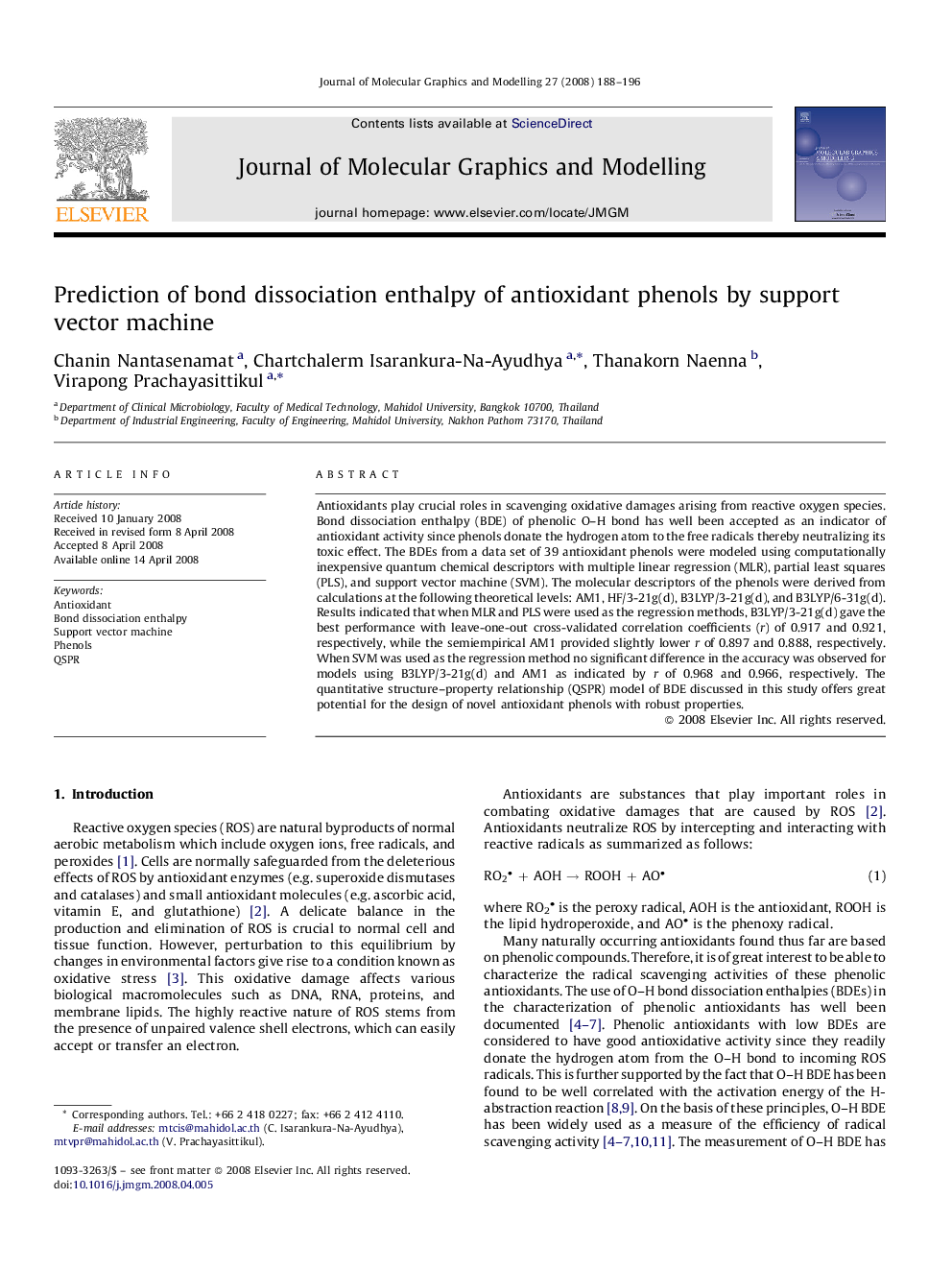| Article ID | Journal | Published Year | Pages | File Type |
|---|---|---|---|---|
| 443854 | Journal of Molecular Graphics and Modelling | 2008 | 9 Pages |
Antioxidants play crucial roles in scavenging oxidative damages arising from reactive oxygen species. Bond dissociation enthalpy (BDE) of phenolic O–H bond has well been accepted as an indicator of antioxidant activity since phenols donate the hydrogen atom to the free radicals thereby neutralizing its toxic effect. The BDEs from a data set of 39 antioxidant phenols were modeled using computationally inexpensive quantum chemical descriptors with multiple linear regression (MLR), partial least squares (PLS), and support vector machine (SVM). The molecular descriptors of the phenols were derived from calculations at the following theoretical levels: AM1, HF/3-21g(d), B3LYP/3-21g(d), and B3LYP/6-31g(d). Results indicated that when MLR and PLS were used as the regression methods, B3LYP/3-21g(d) gave the best performance with leave-one-out cross-validated correlation coefficients (r) of 0.917 and 0.921, respectively, while the semiempirical AM1 provided slightly lower r of 0.897 and 0.888, respectively. When SVM was used as the regression method no significant difference in the accuracy was observed for models using B3LYP/3-21g(d) and AM1 as indicated by r of 0.968 and 0.966, respectively. The quantitative structure–property relationship (QSPR) model of BDE discussed in this study offers great potential for the design of novel antioxidant phenols with robust properties.
